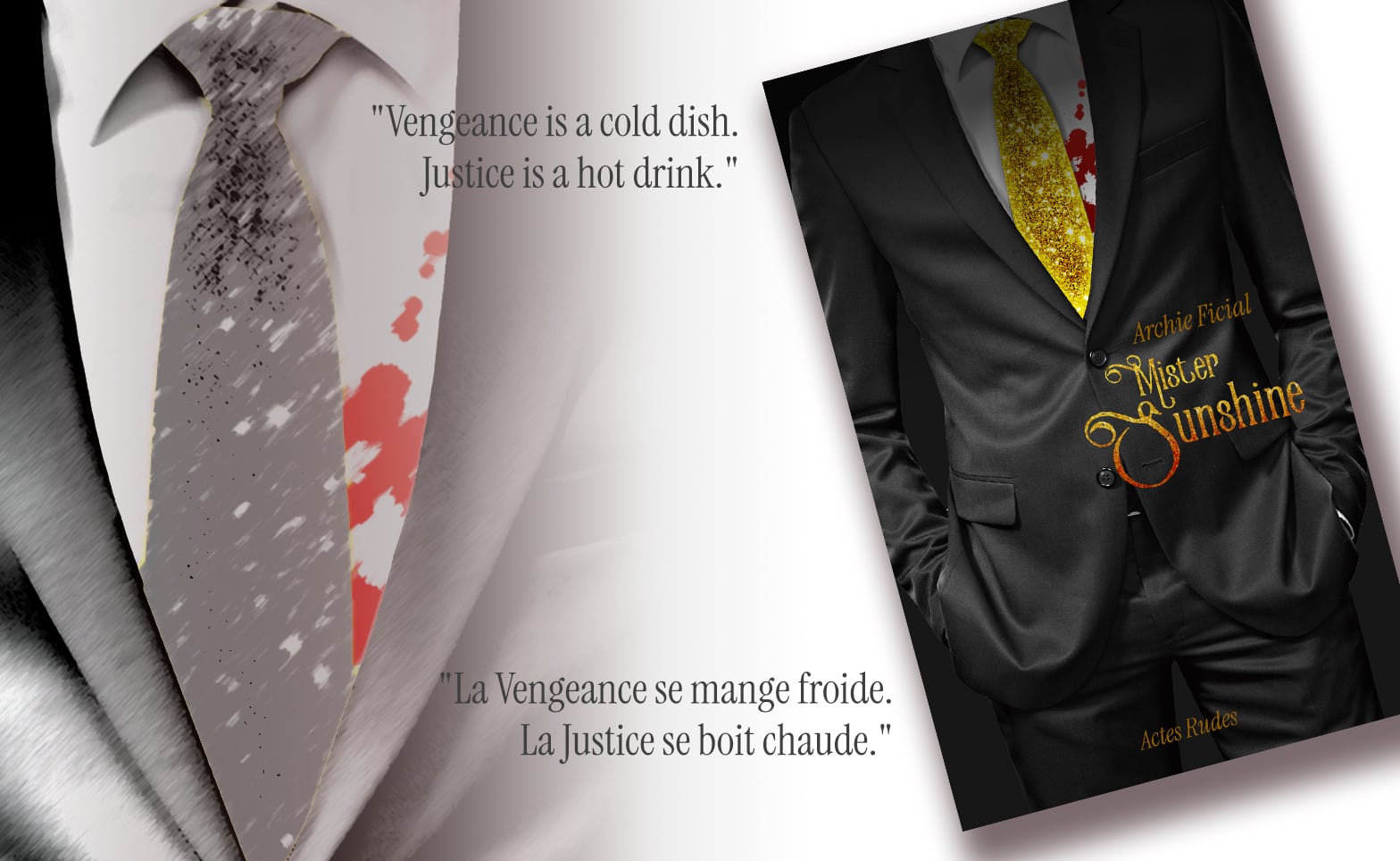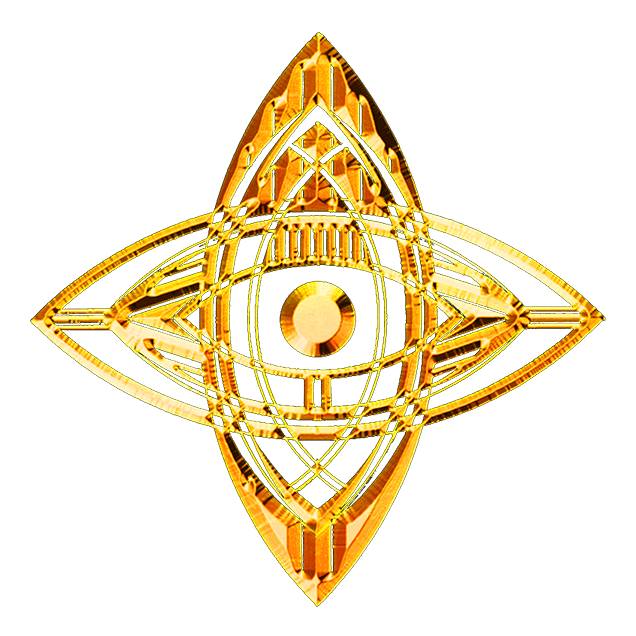The Context
📚 This article is dedicated to a series of 28 practical exercises, one per article, consisting of applying a fluid and organic methodology which is : creating a story from a given visual, then impacting the art direction of the base visual, nuanced by the story thus created. It is an interdependent cycle generating the following creative flow: Basic Visual > Analysis and Psychological impact> Narrative reflection and Narrative design > Story > Improved Visual.
Through 28 concrete examples, and then 28 stories, I will present how a visual can inspire a story and how, in return, the story will guide the art direction to nuance the said visual. For it can improve the semiological atmosphere of the result of the narrative design, which is the Story.
I will also indicate how the differences in cultural context between the English version (or American) and the French version will slightly nuance the stories, mainly for the choice of the Title and Pitch. And, consequently, how these differences in titles will affect the final visual.
Usually, each of these articles would present TWO “back covers” of the same story as well as TWO “front covers” for each of the two languages ; but here, since the title stays the same for either language, there is only a single visual, albeit there are two “back covers” stories and pitches for either French and English version.
It is the reciprocity between Image and Story, Story and Image.
The Story (English Version)

Mister Sunshine
“Vengeance is a cold dish. Justice is a hot drink.”
Nick Flemmings is a biochemist.
Or, rather, a former biochemist since his company decided that he was too costly and that his attitude was too negative -according to the head of the “happiness department” of the said company.
Unable to find work -because of his negative attitude, according to his social helper- he found himself thrown out of his flat because of his bank accounts -which were also way too negative, according to his landlord.
Abandoned by his friends and his wife -who considered him too negative since he lost everything- he decided finally to embark on a trendy and very positive reconversion: the one of personal development and life coaching.
By studying the systems of traumas and their neurochemical actions on the brain, Nick invents a process that allows traumas to be chemically extracted from the human brain, to condense them into a liquid, then bottle them.
Very soon, his activity becomes a phenomenal success and people crave after his revolutionary process which makes people more and more happy and more and more positive, free of all their traumas. Everyone is wandering around with a beatific smile on their lips. Everything is very positive.
Having quickly become a billionaire, his old friends, his ex-wife, and even his old company suddenly find him way much more positive and attempt to reconnect with him. And this, in the hope that all his prosperous positivity will be shared with those who have always believed in him from the start…
Now, for Nick, two problems arise: first, how to express all his gratitude to his ex-country, his ex-wife, his ex-company, his ex-friends and his ex-supporters?
And, above all, what to do with all these bottles filled with traumas?…
The Story (French Version)

Mister Sunshine
“La Vengeance se mange froide. La Justice se boit chaude.”
Nick Flemmings est un biochimiste.
Enfin, un ancien biochimiste depuis que son entreprise a décidé qu’il coûtait bien trop cher et que son attitude était bien trop négative, selon la responsable du « département bonheur » de ladite entreprise.
Ne trouvant pas de travail, à cause de son attitude trop négative selon l’assistante sociale, il se voit jeté hors de son logement pour cause de comptes également trop négatifs, selon son propriétaire.
Abandonné de ses amis et de sa femme, qui le jugent trop négatifs depuis qu’il a tout perdu, il décide de se lancer dans une reconversion tendance et très positive : celle du développement personnel et du coaching de vie.
En étudiant les systèmes des traumatismes et de leurs actions neurochimiques sur le cerveau, Nick invente un procédé qui permet d’extraire chimiquement les traumatismes du cerveau humain, de les condenser en liquide, puis de les mettre en bouteille.
Très bientôt, son activité enregistre un succès phénoménal et les gens se disputent son processus révolutionnaire qui rend les gens de plus en plus heureux et de plus en plus positifs, débarrassés de tous leurs traumatismes. Tout le monde erre partout avec un sourire béat sur les lèvres. Tout est très positif.
Devenu rapidement milliardaire, ses anciens amis, son ex-femme, et même son ancienne entreprise le trouvent soudainement beaucoup plus positif et reprennent contact avec lui. Et ce, dans l’espoir que toute cette positivité sonnante et trébuchante soit partagée avec ceux qui ont toujours cru en lui…
Maintenant, deux problèmes se posent pour Nick : d’abord, comment exprimer toute sa gratitude envers son ex-pays, son ex-femme, son ex-entreprise, ses ex-amis et ses ex-soutiens ?
Et, surtout, que faire de toutes ses bouteilles remplies de traumatismes ?…
The Creative Process
Step 1: Analysis of the Picture

A-The emotional and psychological feeling
The proposed visual – before any graphic intervention – represents a close-up shot of a man in a modern dark gray suit, his hands are in his pockets and he is wearing a golden glittering tie. His face is not shown and the neutral background gives no indication of a specific location or spatio-temporal context.
There is a strong contrast between the character’s very classic attire and his very outrageous tie which conveys an opposite symbolism, forming the core visual interest of the image. We narratively deduce a form of excess, dream, provocation, ridicule or contradiction between a “general conformist system” opposing a “contradictory minority”.
B-The possible narrative symbolisms of the character
Depending on this first reading – and in a current modern context – several options are therefore possible, according to a non-exhaustive and non-exclusive list:
• The cold gray suit can evoke that of a trader or a businessman and therefore the world of finance. The gold tie can therefore evoke success, material wealth or the moral drift of one’s profession.
• This costume can also be that of a politician. The golden tie can evoke “smoke and mirrors” used to deceive one’s interlocutor or, conversely, the desire to bring “sun” to the citizens and people.
• The extremely monotonous and conformist appearance of the costume can symbolize the “ordinary life” of a routine from a life without surprises and without emotions. The golden tie could therefore evoke a desire to dream or escape towards a more “sunny” life, full of meaning. Unless it symbolizes a form of escape towards an artificial world like drugs or activities assimilated to “escapism”.
The character’s body language is also important: the man has his hands in his pockets, which can have several meanings:
• Is it a position of assurance and self-confidence, indicating success? Or even a posture of arrogance?
• Is it, on the contrary, a way of hiding one’s hands, as a defense tactic? Allowing him to hide a lack of self-confidence or emotional weakness that his hands might betray?
• Is this a way of hiding something that he would have inside his pockets, ready to use it when the time comes? In this case, what would this thing be and what motivation would guide its use?
Therefore, we have several avenues of interpretation of this visual, but to create a narrative interest which would go against stereotypical interpretations by a first reading, it is appropriate to both carry out the synthesis of all these elements, then to observe the richness of their contradictions, without being incoherent.
Step 2: Narrative Approach
A-Literary Genre
The most widespread approach in our current very materialistic and money-based Western socio-cultural context. Would be to treat only one of the narrative approaches cited above, namely:
• Financial success, which would lead to a type of “success story” – real (memoir) or imaginary (realistic novel).
• The mirage and the superfluous, which can cover genres such as fantasy, science-fiction, drama or fairytales.
• Escapism, which can mix all the genres mentioned above.
In order to create an emotional hybridization which would take on the “appearance” of the genres mentioned above before leading to a “hidden reality“, I therefore decided to develop first the plot on the themes Science Fiction, Satire and Social Fiction. But, later on, I will add a component of Vengeance, in order to be completely out of step with the aforementioned list, and then create an unexpected element of surprise.
B-The “bling” mirage…
To establish the initial context of the plot, I used the initial symbolic elements of “narrative appearance” transmitted by the basic visual: the success story (from nothing to everything), personal development and mirage.
By using the subjective approach of the unemployed person confronted with the cruel social reality of the world of work, I create an implication for the reader which allows him an identification with a well-known situation borrowed from Social Fiction. The resulting success story allows me to activate the leverage of the dream for a better life delivered “by magic” to arouse the reader’s interest.
The nature of the character’s profession allows me to lay the foundations of the science-fiction genre through biochemistry to be able to develop it later. Thus, the invention of “trauma in a bottle” allows me to make the link between the “success story” and “personal development”, creating another type of mental ideal, in addition to the material ideal of the success-story. Thus, creating the Mirage.
C-…and the “blood” reality.
The principle of “Mirage” having been established at start, I can then reveal the first elements of the plot which will arouse the interest of the reader by going against an utopian story appearing too perfect to be true.
The strong sarcastic tone employed from the beginning of the summary serves as an emotional guide for the reader to understand that “something is wrong” all along.
Indeed, by describing the utopian and futile pressure of a “perfect society that never makes a mistake” and by placing the “fault” on the protagonist, I create a cognitive empathy that develops between the reader and the character. I establish notions of injustice which can be understood by most of western readers, these will serve as a conclusion to the summary by setting out the premises of Vengeance.
The idea of “poetic justice” – where the victim uses the same weapons as his persecutors– allows us to explore many emotional routes with which the reader can identify, such as: injustice, social revenge, highlighting hypocrisy or administrative and sentimental manipulation.
The three initial themes of success-story, personal development and mirage are ultimately revealed to have been nothing more than pretexts for the real plot: Vengeance.
And by concluding the summary with the use of the science-fiction technology principle described at the beginning, I create a causal link loop by changing the destination of this technology. I change consequently the plot itself as well and I question the reader about its use, encouraging him to read the story to finally discover the true motivations behind the technology of “Trauma in a bottle”:
• Was it really supposed to help society?
• Did the protagonist initially develop it to heal himself?
• Am I making a symbolic allusion to a society that desperately wants to move toward happiness at the expense of reality?
• Am I referring to the “logistical problems” of storing toxic waste inherited from biochemistry – on a material or mental level? What repercussions would this “traumatic waste” have if it were released into nature?
• Was this “traumatic poison” created from the beginning by the protagonist only to satisfy his desire for revenge?
By leaving all these questions open, I instill an emotional and investigative tension in the reader and I therefore encourage them to read the story to satisfy these different narrative tensions.
D-The Title (French and English)
• The English and French titles are the same: “Mister Sunshine”. By creating a very theatrical, almost burlesque nickname, I form a cognitive caricature of an ideal and sublime character which could be borrowed from the world of the circus or superheroes. The protagonist literally claims to be a ray of sunshine for everyone: for society by ridding it of its trauma, for himself by achieving financial success and for all his relationships by forcing the line on the overused expression of “positivity” via the archetype of sunlight.
To avoid any confusion about the nature of the story, the subtlety of the reading of this title must therefore be counterbalanced: by strong visual signs through the graphic treatment of the cover, by the typography and as by the pitch itself. Doing so enables me to signal to the reader that “this is all too good to be true” and that “something is wrong”.
E-The Pitch (French and English)
The English Pitch is « Vengeance is a cold dish. Justice is a hot drink», the French pitch is « La vengeance se mange froid. La justice se boit chaude» which has almost the same meaning. The literary expression “Vengeance is a dish best served cold” was used in the 18th century by the French writer Pierre Choderlos de Laclos for his famous work “Les Liaisons Dangereuses”, which also speaks of revenge and self-destruction.
I decided to develop this expression by qualifying it with my own plot, drawing a parallel between “what is eaten” and “what is drunk“, between Vengeance and Justice. In addition, I instill an allusion to the “liquid element” of the “trauma in a bottle” which is the technology that serves as the narrative pivot of the entire story.
The “hot/cold” opposition of the pitch allows us to evoke two complementary concepts: both a revenge carefully planned over time – the “cold”; but, also, a rage and an all-consuming resolve smoldering beneath the surface – the “hot”.
This also allows us to establish a moral and philosophical notion developed within the story: the blurred boundaries between Justice and Vengeance, whether personal or social.
F-Easter Egg Bonus: The names of Author and Publishing House
“Easter eggs” are very common in video games. This concept is a form of “private joke” hidden within the program which allows an allusion, a meme or a hidden message to be transmitted to those who know how to detect it. In this exercise and all the following ones, I use this playful semantics to “invent” an author name in relation with the story itself, as well as for the publishing house which is fictitious, according to the same principle.
• The author of this book is “Archie Ficial”, which is a pun on the word “Artificial” which evokes both the ephemeral pursuit of illusory desires instilled by the chemistry developed in the book, as well as the “fake” personality of the protagonist who pretends to be someone he is not.
• The publishing house “Actes Rudes” – means “Rough Acts” in French. This is a joke reference to Actes Sud (“South Acts”) which is a French publishing house based in the South of France. The homophony between “Rude” and “Sud” in French language allows us to make a pun on the “roughness” of the protagonist’s actions and motivations.
Step 3: The orientation of Art Direction for the Cover
A-Choice of picture enhancement
Important note : The original visual contained a graphic error: the lower part of the jacket revealed the end of the real tie of the man who served as the model and on which a “false golden tie” was placed. I therefore had to correct this error by removing the tip of the true tie to avoid a false reading of the final visual. It’s all in the details.
Once the story was designed, it was necessary to nuance the very “caricatural” initial visual by instilling
clues about the true nature of the story.
This is why I speckled the shirt of the protagonist (who represents Nick Flemmings) with a few blood stains. The pattern of these bloody traces should not be excessive or too “gory”. Actually, these traces had to be almost hidden by the golden tie, giving the impression that the protagonist had tried to hide them in a hurry after committing a crime.
Symbolically, it is the shimmer of the golden tie -and, therefore, the mirage and the success- which is used to conceal the crime.
B-Typographic choice
To complete the visual reading in order to form a cognitive reciprocity of meaning and understanding of the plot, I needed a very particular Typeface whose treatment would allow me to convey the quintessence of the story:
I opted for the Victorian Parlor Vintage Alternate.
Because this font has several characteristics specific to serving the multiplicity of themes addressed in the story:
• First, it is a typeface which mixes the properties of a Garalde serif -on its low-cases glyphs– whereas its upper-cases glyphs are almost borrowed to an English type manual script writing, each upper-case glyph being almost an illuminated letter.
It therefore makes the connection between a Classic and ordered aspect – evoking the integration of the Success-story element (classy, elegant, calm, respectable) with the Exuberant and fancy aspect of the illuminated aspect – evoking excess, illusion and mirage (convolutions, sinuosity, complexity, ramifications).
• This font is also slightly textured. It therefore evokes a form of authenticity and/or raw harshness capable of serving the implacable and sincere character of Vengeance’s approach, without being too apparent.
• Finally, this font has almost a “narrow” type structure, elongated vertically. This induces a form of elegant and elaborate structure serving a feeling of subtlety extending over time and the maturation of carefully crafted plans, rather than simple brute and immediate force.
• This vertical elongation can also evoke the pursuit of “high” and “abstract” goals rather than material and crude ones. It confirms the ultimate high ideal pursued by the protagonist such as Justice and Vengeance.
Regarding the graphic treatment of the typography, I replicated the glittery texture of the tie over the entire surface of the glyphs, in order to make the visual link between the tie and the title to initially produce the “miraculous character” effect from “Mister Sunshine”. As I added blood stains under the golden tie to evoke the hidden crime, I used the same principle for the title: I created a blood-colored splash gradient in the lower part of the title, to signify that all that glitters is not gold and that, definitely, something sinister is lurking beneath the glitter of the illusion.
This post belongs to the Category :
Check my latest posts!
- Using AI creatively : Character Design – Yaràn Malak”
- Article Header Design: “How to use AI for Weak Signals – Trump, the International Revolutionary?”
- Creative Compass : Where Art meets Story
- Article Header Design: “Uranium for the U.S. Nuclear Renaissance: Meeting Unprecedented Requirements – Part 1”
- Article Header Design: “Towards a U.S. Nuclear Renaissance?”
Check the latest comments!
Thank you very much for your comment coming from an IT expert, Nouha!
Very interesting article and excellent choice for th Sphinx!!
Splendid as always! And also this showcase the very broad scope of your design skills!
Related Themes :
Related Links :
Your comment will be posted after approval












Leave a Comment